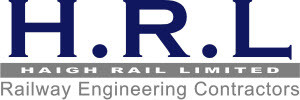Network Rail Vegetation Management Project

Haigh Rail were commissioned to complete a programme of Vegetation Management works. The purpose of the project was to provide a fully managed provision of Arboriculture Services, in order to protect the rail infrastructure, commuters, maintenance staff and 3rd parties from harm.
Haigh Rail were responsible for full planning and execution of all Overhead Line Isolations, as well as all works programme, project and site management requirements.
Our specific site scope of works included:
- Full site Ecology surveying and reporting
- Removal of all vegetation within 6.5m of the cess rails
- Removal of all trees within falling distance of the infrastructure
- Removal of all dying or diseased trees
- Stumps lowered to the topography of the ground
- Woodchip spreading on site to a depth of no greater than 100mm
- Unmanageable lengths of timber left or banded in situ for habitat purposes
- Chemical application for hazardous and invasive plants
- Project Handover
Detailed Ecology Surveys were undertaken by our team of fully trained ecologists in advance of the works and issued to the client prior to works commencing.
Once approved and working in line with the ecology reports, our Contract Management team, carried out their own daily ecology reports. This included bird nest, protected species and invasive weeds inspections.
All findings were logged, reported and suitable exclusion zones were put in place where required, to protect the local wildlife.
Our highly qualified and extensive team of skilled, trained and competent personnel work 24/7, which, enabled us to produce a programme for both daytime and night-time works.
During night-time working, our in-house isolation teams planned and carried out isolations, so that trees in challenging locations in and around the Overhead Line Equipment could be felled or dismantled to current AFAG (Arboriculture and Forestry Advisory Group) guidance.
The project was successfully completed to meet the customer’s requirements and all handover documentation was supplied to meet the project landing requirements.
Download Case Study










